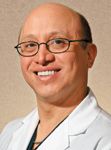- Acne
- Actinic Keratosis
- Aesthetics
- Alopecia
- Atopic Dermatitis
- Buy-and-Bill
- COVID-19
- Case-Based Roundtable
- Chronic Hand Eczema
- Drug Watch
- Eczema
- General Dermatology
- Hidradenitis Suppurativa
- Melasma
- NP and PA
- Pediatric Dermatology
- Pigmentary Disorders
- Practice Management
- Precision Medicine and Biologics
- Prurigo Nodularis
- Psoriasis
- Psoriatic Arthritis
- Rare Disease
- Rosacea
- Skin Cancer
- Vitiligo
- Wound Care
Article
RF device shapes up arm laxity
ThermaCoolâ„¢ is currently FDA-approved for treatment of skin tightening in the face. It has also been used in clinical practice for tightening other regions. One expert reports promising results using this monopolar radiofrequency device in a clinical trial in patients with upper-arm skin laxity.

Key Points

Researchers treated 110 patients with ThermaCool™ (Thermage®), a device used for upper-arm skin laxity, which produced positive results, says David J. Goldberg M.D., J.D., clinical professor of dermatology and director of laser research at Mount Sinai School of Medicine and director of Skin Laser & Surgery Specialists of New York/New Jersey.
"Overall, we saw that there were improvements in the laxity and firmness of the skin, just after one single treatment. Furthermore, patients showed a high degree of satisfaction following the procedure," Dr. Goldberg tells Dermatology Times.
The device works by delivering a volumetric, uniform heating effect to the deep dermis via radiofrequency energy, using a maximum fluence of 225 J/cm2 . The device will cause immediate collagen contraction, and, over time, a gradual skin tightening will occur, as well as the promotion of neocollagenesis. The device is equipped with a unique feature within the handpiece that delivers cryogen spray to the surface of the skin - before, during and after each radiofrequency pulse - in order to further protect the epidermis.
In the multicentered European arm of the study, including three clinical sites, 40 patients received a single treatment of the monopolar radiofrequency device to the upper arm with a 1.5 cm2 tip. Here, several circumferential applications of energy were applied. Dr. Goldberg says that at the six-month follow-up, results showed the skin texture had improved for most patients, and mild contouring was seen in some.
In the multicentered U.S. arm of the study, including seven clinical sites, 70 patients received a single treatment using a 3.0 cm2 tip, where only one circumferential application of energy pulses was applied. Patients in the study received an average of 590 radiofrequency energy pulses per arm. Patients were subsequently followed for six months.
"Results showed subtle changes in the contour of the arm, with more evident changes seen in 50 percent of participants, using visual assessment and photographs. Using a standard pinch test, improvements were seen in laxity and firmness of the skin. Furthermore, 60 percent of patients said they were satisfied with post-treatment results, according to self-assessment surveys. The results are significant, as they are achieved after only a single treatment," Dr. Goldberg says.
He says the study design in six of the clinical sites included the use of a BTC 2000 - an instrument designed to measure the biomechanical characteristics of the skin, evaluating arm stiffness and energy absorption. Furthermore, the BTC objective measures demonstrated improvement in up to 78 percent of patients, he says.
"In the past, pain perceived by the patient has always been an issue to contend with," he says. "In the U.S. study, though, 57 of the patients required no medications, 10 received NSAIDS, and three required anxiolytics."
Conclusions
Study inclusion consisted of patients who had lax, wrinkled, abundant skin on the inner aspect of the upper arm, minimal sun damage and no excessive fat, as well as patients who were able to hold their arms in an elevated position over their heads, meaning no rotator cuff injury or any restrictions in the range of motion of the arm.
"The benefits of the procedure are that it is relatively quick, with treatment duration averaging approximately one hour, as seen in the study. Furthermore, there is no downtime, and, importantly, no scarring was noted in any of the study subjects. Changes may be seen within days, and progressive improvements are seen up to six months following treatment. However, results are clearly less than those seen with surgical interventions," Dr. Goldberg says.










